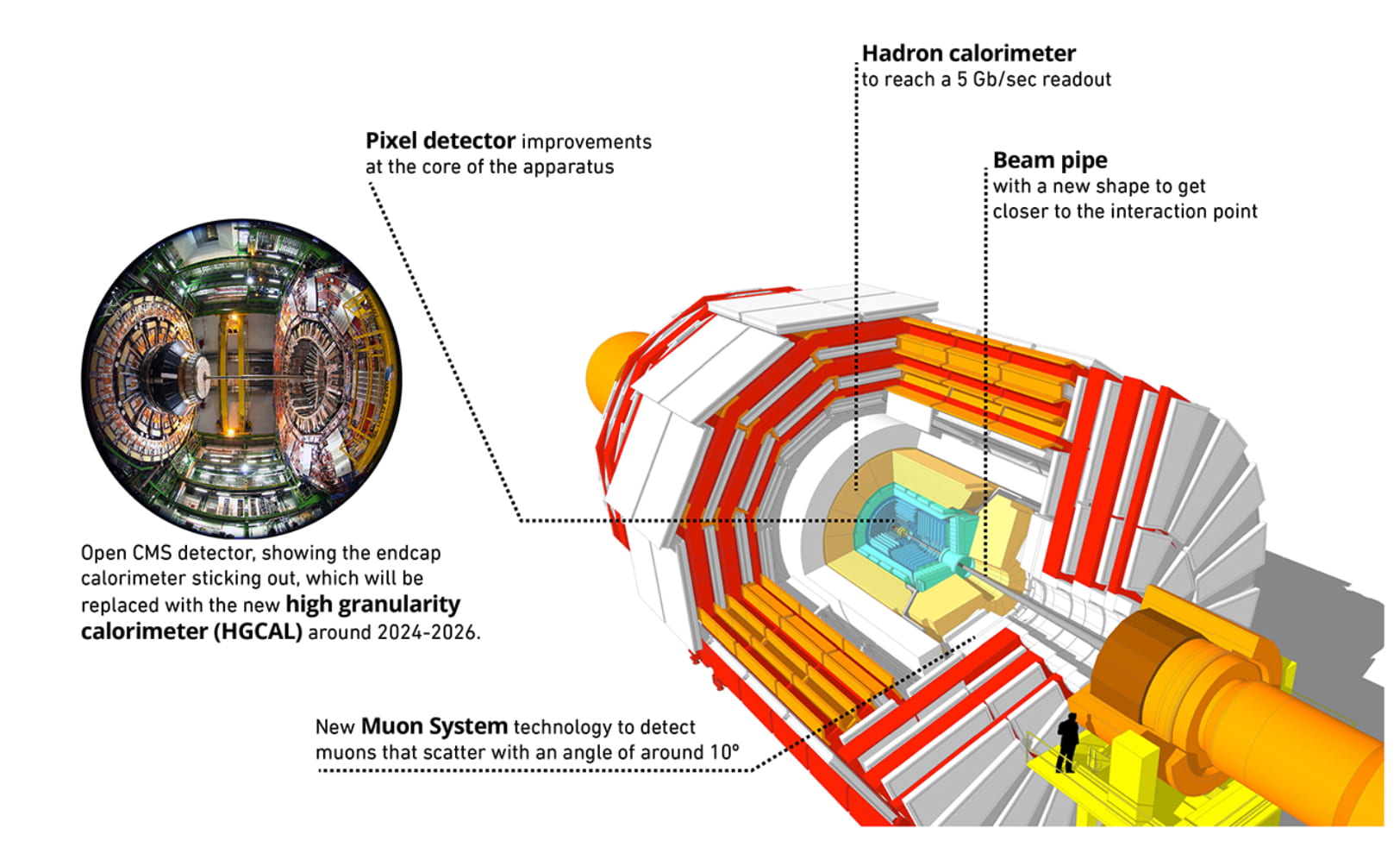Large Hadron Collider (LHC) is the largest and most powerful particle accelerator. It was built by CERN, the European Organization for Nuclear Research. It lies in a tunnel 27 kilometres in circumference and as deep as 574 ft, beneath the France-Switzerland near Geneva.


The total cost was shared by CERN's 20 Member States, with significant contributions from the six observer nations.

- The LHC is a particle accelerator that pushes protons or ions to near the speed of light. It consists of a 27-kilometre ring of superconducting magnets with a number of accelerating structures that boost the energy of the particles along the way.
- The aim of the LHC's detectors is to allow physicists to test the predictions of different theories of particle physics, including measuring the properties of the Higgs Boson and searching for the large family of new particles predicted by supersymmetric theories, as well as unsolved questions of physics.
- The LHC is planned to run over the next 20 years, with several stops scheduled for upgrades and maintenance work.
- It was first shut down on 13 February 2013 for its 2-year upgrade called Long Shutdown 1 (LS1), which was to touch on many aspects of the LHC: enabling collisions at 14 TeV, enhancing its detectors and pre-accelerators (the Proton Synchrotron and Super Proton Synchrotron), as well as replacing its ventilation system and 100 km (62 mi) of cabling impaired by high-energy collisions from its first run.
- Long Shutdown 2 (LS2) started 10 December 2018. The LHC and the whole CERN accelerator complex is being maintained and upgraded. The goal of the upgrades is to implement the High Luminosity Large Hadron Collider (HL-LHC) project, that will increase the luminosity by a factor of 10. LS2 is projected to end in 2021.
- The LHC allows scientists to reproduce the conditions that existed within a billionth of a second after the Big Bang by colliding beams of high-energy protons or ions at colossal speeds, close to the speed of light.
- The total cost of building the LHC was approximately £ 3.74 billion, made up of three major components:
- The Accelerator (£ 3 billion)
- The experiments (£ 728 million)
- The computers (£ 17 million)
The total cost was shared by CERN's 20 Member States, with significant contributions from the six observer nations.
How LHC works:
The principle behind the LHC is pretty simple. First, you fire two beams of particles along two pathways, one going clockwise and the other going counterclockwise. You accelerate both beams to near the speed of light. Then, you direct both beams toward each other and watch what happens.
The Large Hadron Collider (LHC) is the last in a ‘ladder’ of accelerators that are used in sequence to accelerate particles up to the LHC’s maximum energy. Each accelerator builds up the particles to their maximum energies before introducing it to the next biggest accelerator. The particles the LHC accelerates and collides are protons or lead nuclei, both have positive charges and this means that they can be steered by use of magnetic fields. There are 9300 superconducting magnets, of various types, that are used to steer and focus beams of particles as they race around the colossal loop of the LHC.
The LHC accelerates two thin beams of atomic particles travelling in opposite directions around the 27 km collider, each about 2mm across.Each beam sits inside its own pipe, where the beam pipes are enclosed in a sheath of superconducting magnets and all of this is bathed in super-cooled liquid helium at 1.8K (-271°C). At the centre of each of the four detectors the beams briefly share the same pipe as the magnets direct them to collide head-on.

A detector is designed to track the motion and measure the energy and charge of all the particles thrown out from each collision. They are able to follow the millions of particles produced and identify the distinctive behaviour of interesting new particles from among haystack. The LHC detectors are very large, their great size is necessary to trap high energy particles travelling at tremendous speeds and to allow the tracks of charged particles to be measurably curved by the detectors magnets.The layers nearest to the collision point are designed to very precisely track the movement of charged particles. Subsequent layers track the movement, slow down and stop longer-lived and more energetic particles, as these particles are slowed down they release energy that can be measured.
It is impossible for any computer to collect and process all the raw data that each detector creates at any point in time, just over one petabyte (~ 1,050,000 gigabytes) per second. Therefore, a lot of the data is instantly filtered out by the so-called trigger systems of the experiments. The trigger systems run complicated algorithms designed to find the interesting science and write the selected data to computer storage. The information saved is then processed more slowly by other algorithms designed to determine the full details of the particles and so find the, often very rare, decays that are of especial interest. This monumental task is handled by “The Grid”, the Grid has many applications, but its first major application was to allow researchers at CERN to share global computing power to manage and process the huge quantities of data that the LHC produces.
The results from the LHC are not completely predictable as the experiments are testing ideas that are at the frontiers of our knowledge and understanding. Researchers expect to confirm predictions made on the basis of what we know from previous experiments and theories.
Comments
Post a Comment